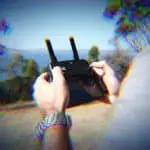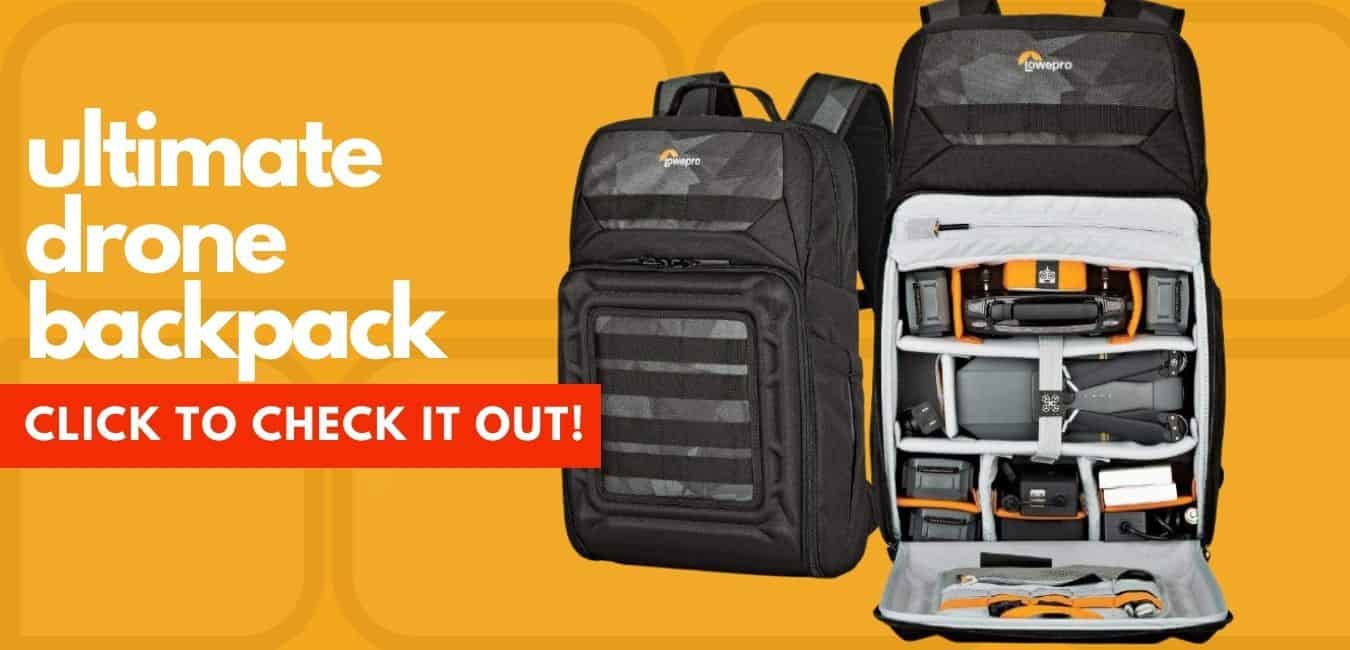How High can a Drone Fly? Laws, Safety and Flying Tips.
When you buy a drone, you can fly it to any height, right? Wrong.
Most drones, have built-in measures that restrict them from flying above a certain altitude.
DJI, which is one of the best and well-known brands in photography drones, caps their quadcopters to reach a max height of 1500 feet. Is this the legal limit? Let’s find out.
Quick Links
How high can a Drone fly legally?
This depends on the rules and regulations in your region. For instance, Popular Mechanics reports that in Europe, the maximum altitude is capped at 500 feet by law.
In the US, you will be subject to slightly tighter restrictions – maximum altitude is capped at 400 feet.
Note that these figures are maximum altitudes relative to your take-off altitude, AND NOT relative to sea level.
Additionally, the Federal Aviation Administration (FAA) only permits you to fly your drone as long as you maintain visual contact with it (also referred to as VLOS – Visual Line Of Sight). If your drones flies beyond visual range, it enters what is known as ‘Beyond Visual Line of Sight’ (BVLOS) and you could find yourself in trouble with the law. However, you can apply for a special permit or waiver from the FAA – and possibly from the regulating authority in your area – for exceeding this restriction.
Drone Breaks Record by Flying to 11,000 Feet
I know this sounds crazy, but it actually happened. According to a report by Popular Science, a YouTube user going by the name Tollymaster uploaded a video of a drone reaching an altitude of 11,000 feet (2 miles or 3.4 km)!
Shortly after, the video was taken down as not only is flying above 400 feet illegal in the US (500ft in Europe), a lot of aircraft fly at this altitude so there is a risk of collision. If that isn’t enough, a malfunction of the drone (or loss of battery charge, or a loss of signal connection) could sending it plummeting towards the earth like a meteorite!
Why would I want to fly high?
Aerial photography and videography provides a unique perspective and can be jaw dropping when done correctly. This type of footage used to be the domain of professional film makers and helicopter film crews, but now anyone can capture amazing perspectives and previously unseen viewpoints with a drone.
Being able to fly high is also a great capability for people and businesses who need to inspect tall structures like chimney stacks and electrical pylons. Not only do drones save money, they also eliminate the need for humans to risk their necks climbing such structures!
Tips for Flying at High Altitude
If you want to capture amazing panoramic views from high up in the sky, there are a few additional things to consider:
- Keep off restricted areas such as military camps and airports. Airports are particularly dangerous areas because manned aircraft are taking off and landing, and you risk a collision if you are in breach of the minimum legal safe distance.
- Always observe the battery level. A report by Drone DJ states that for every 6000 feet in altitude, a drone’s battery loses about 10% of its power due to the cold weather. You may be thinking that this is ridiculously high, and that your drones altitude limiter would prevent you from such exploits, but this is relevant if you are taking off at a point high above sea level – in a mountain range for example.
- Keep away from crowded areas. For safety reasons, do not fly at high altitudes directly above people. An out of control drone hurtling towards the ground could cause serious damage to an unlucky person, or people.
High Altitude Flying and Safety
Remember that the higher you go, the higher the chances of your drone encountering strong winds, which may push it away from your transmitter signal range. If you lose control, we all know what happens next.
Additionally, since most drones have their max altitude capped so as to comply with the law, going higher will need you to circumvent or hack your drones software, which could void your warranty.
Generally, soaring much higher than the set limit is very risky and should only be done when you have a genuine need to do so (and you have the necessary waiver).
High Altitude Drones and the Law

In some countries, there are no clear laws that state how far up you can fly your drone. If you live in the US, the FAA caps the maximum legal altitude to 400 feet but you can apply for an altitude waiver to exceed this for special circumstances – for example, if you wanted to film at high altitude for research purposes.
As a general rule of thumb though, you should not exceed the distance that goes beyond your line of sight.
Sensitive airspace
According to the FAA, there are many types of restrictions that affect drone flights. For instance, you are not allowed to fly your aerial vehicle over security sensitive airspace, the White House in DC for example. In fact, the whole of Washington DC is off limits to drone pilots unless special permission is granted.
Critical infrastructure such as nuclear plants and hydroelectric dams are also off limits and if you dare fly past a military installation/ facility, you will get into serious trouble with the men in uniform.
Stadiums and over specified events
Flying your bird above, in or around stadiums one hour before through to one hour after sporting events is also prohibited.
You are prohibited to fly within a 3-mile radius of the stadium that the event is taking place.
Airports
Generally, you are not supposed to fly your aircraft close to airports as your drone might collide with large cargo or passenger planes at low altitude. You don’t need us to tell you that the consequences of such a collision could be dire, and because of this, authorities take any breaches of these rules VERY seriously. Just look at the Gatwick Airport shutdown for proof.
The FAA actually prohibits recreational drone pilots but law enforcement, government agencies and people with Remote Pilot Certificates who follow FAA Part 107 rules can get permission to fly around the airport airspace.
Wildfires and disaster sites
Picture having a drone smash during a rescue operation. Talk about disastrous. This is why the FAA prohibits flying your unmanned aircraft over wildfires, disaster sites, hurricanes, and other emergency or rescue operations because you may end up adding insult to injury by hindering the rescue teams..
Which drones can fly the highest?
It is quite difficult to answer this question because there are now so many drones available, and some people even make their own. However, DJI’s Phantom 4 needs no introduction when talking about flying drones at high altitude.
How high can you fly a Phantom 4 drone?
DJI dominates the drone market due to producing great drones such as the Phantom 4, which is one of the best, if not the best drone on the market right now.
Though capped at a maximum of 400 feet for the US market due to FAA regulations, you can actually take your Phantom 4 to 6,000 meters above sea level, which is roughly 19,685 feet..!!…
If you have the need to go higher, and have the waivers, this drone can handle it (especially with it’s great camera).
Please note – according to DJI, the Phantom 4 is no longer in production, although they are still available through numerous retailers – check our camera drones guide to find out where you can buy each model.
How high can you fly a Parrot Drone?
If you are on a tight budget, you might want to consider buying a Parrot drone. A Parrot Blog report states that the Bepop 2, which is quite a popular model, can take your aerial photography or videography camera to 328 feet in less than 20 seconds. You can find more about this drone in our camera drone article. Also check out the video below of someone piloting the Bebop 2 at 455ft:
Summary
If you have bought a drone to take your photography or videography work to the next level, you should be aware of the rules and regulations so that you do not get yourself into trouble with the long arm of the law. Drones are a new technology and a rapidly evolving one. As with all technology, the law makers struggle to keep up with the pace of innovation and how to best legislate to protect the public, so we have a responsibility to fly our drones as safely as possible.
You should look for a drone that can reach your desired altitude ceiling so that it serves its purpose. Even with altitude capping laws, you can still apply for waivers from the relevant authorities so as to get the perfect shots or best fulfill the purpose you have in mind.
All in all, I hope you enjoyed the article and, as always, happy flying!






